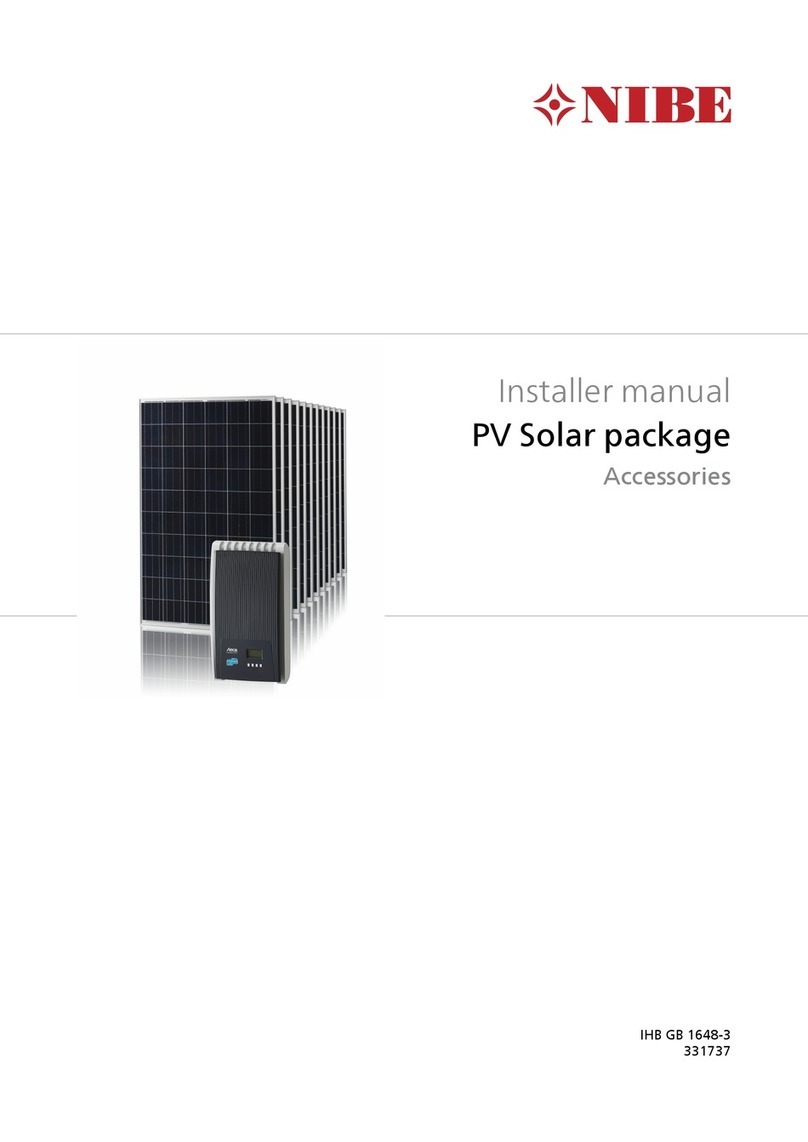
General
The installation must only be carried out by competent
personnel.
The enclosed materials are those required for the install-
ations described (see page 12),. In special cases, these
may need to be supplemented. If in doubt, contact your
supplier. Information regarding applicable standards and
regulations must be obtained prior to the installation and
commissioning of the solar panel system. The electrical
installation, and notification to the power supplier, must
be carried out by a qualified electrician. The form for the
inverter must be enclosed with the notification Please
note that commissioning the installation before the
power supplier has given its approval is not permitted.
NOTE
Installation of a solar panel is an extensive in-
tervention on an existing roof. The roof cover-
ing, particularly on converted and inhabited loft
spaces or where the roof's minimum angle is
undersized (relative to the covering), may re-
quire further measures against moisture be-
cause of wind pressure and drifting snow, this
must be evaluated by the installer on a case to
case basis. The roof design must be able to
handle the wind and snow loading that can
occur in the region.
STATIC LOAD
The installation is only permitted to be performed on
roof surfaces or support structures with sufficient carry-
ing capacity and strength. If necessary, the static load
capacity of the roof and roof structure must be investig-
ated before the solar panels are installed. Great import-
ance should be placed on the condition of wooden roof
structures and the possibilities for screwing the
mounting devices for the solar panels to the structure.
The roof structure must be reinforced if necessary. In-
spection of the whole solar panel installation in accord-
ance with DIN 1055 part 4 and 5, or in accordance with
country-specific regulations, is required, in particular in
areas that experience snowfall and strong winds. The
characteristics of the installation’s location (prevailing
wind direction, whirlwinds, etc.) must also be included
in the calculation/estimate if these could involve in-
creased loads. The solar panels must be installed so
that snowdrifts resulting from snow guards or due to
special conditions in the installation location cannot occur
in the vicinity of the solar panels.
The distance from the outer edges of the roof must be
at least 0.35 m at the sides of roofs and 0.2 m at ridges
and eaves, in order to reduce the risk of the wind ripping
the solar panels off.
The installation system according to DIN 1055 part 5 for
snow zone II is intended for use up to 400 m above sea
level. If the installation is made on a tiled roof, it is re-
commended that the snow is cleared if it reaches a
depth of more than 30 cm on the solar panels (NOTE!
If the snow has melted, been packed down and then
more snow has fallen and so the density has increased,
the snow may need to be cleared - even though it is not
30 cm deep.)
If there is a risk that the snow will slide down onto the
panels and in particular behind the rear of raised panels,
snow guards must be installed to prevent this.
Also ensure that the material under roofs with roof tiles
is sufficiently stable to support the roof mounting points.
Otherwise the roof must be reinforced. The installer
must evaluate this and make a decision. If in doubt, a
structural engineer needs to be consulted. We also re-
commend that the roof tiles should be ground down so
there are no point loads between the roof and the roof
brackets. The minimum distance between roof tiles at
overlap points and the underside of the brackets is 3
mm, in order to allow for any movements in the
mounting system due to the loads that can arise.
SAFETY INSTRUCTIONS
• Safety regulations for working on roofs and similar
structures must be followed.
• Protection against falling parts must be installed. This
is particularly important in locations where people pass
below the roof/building.
• Personal safety equipment and/or scaffolding must
be used when working on roofs, according to applic-
able regulations.
9Chapter 3 | InstallationNIBE PV solar cell package
3 Installation





























